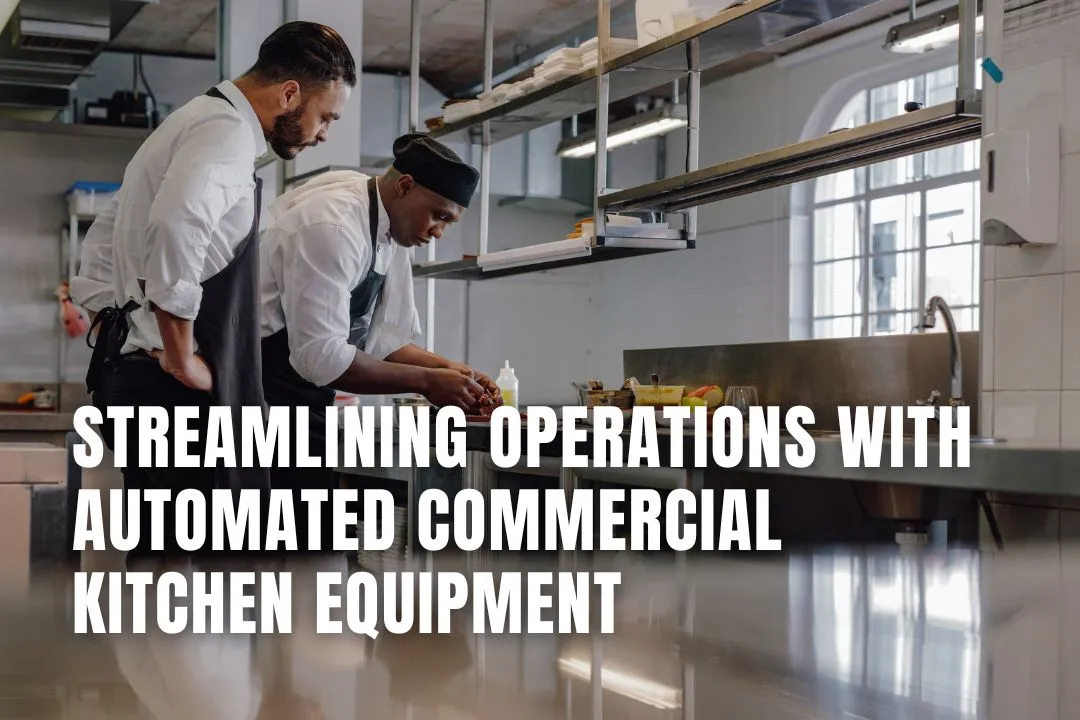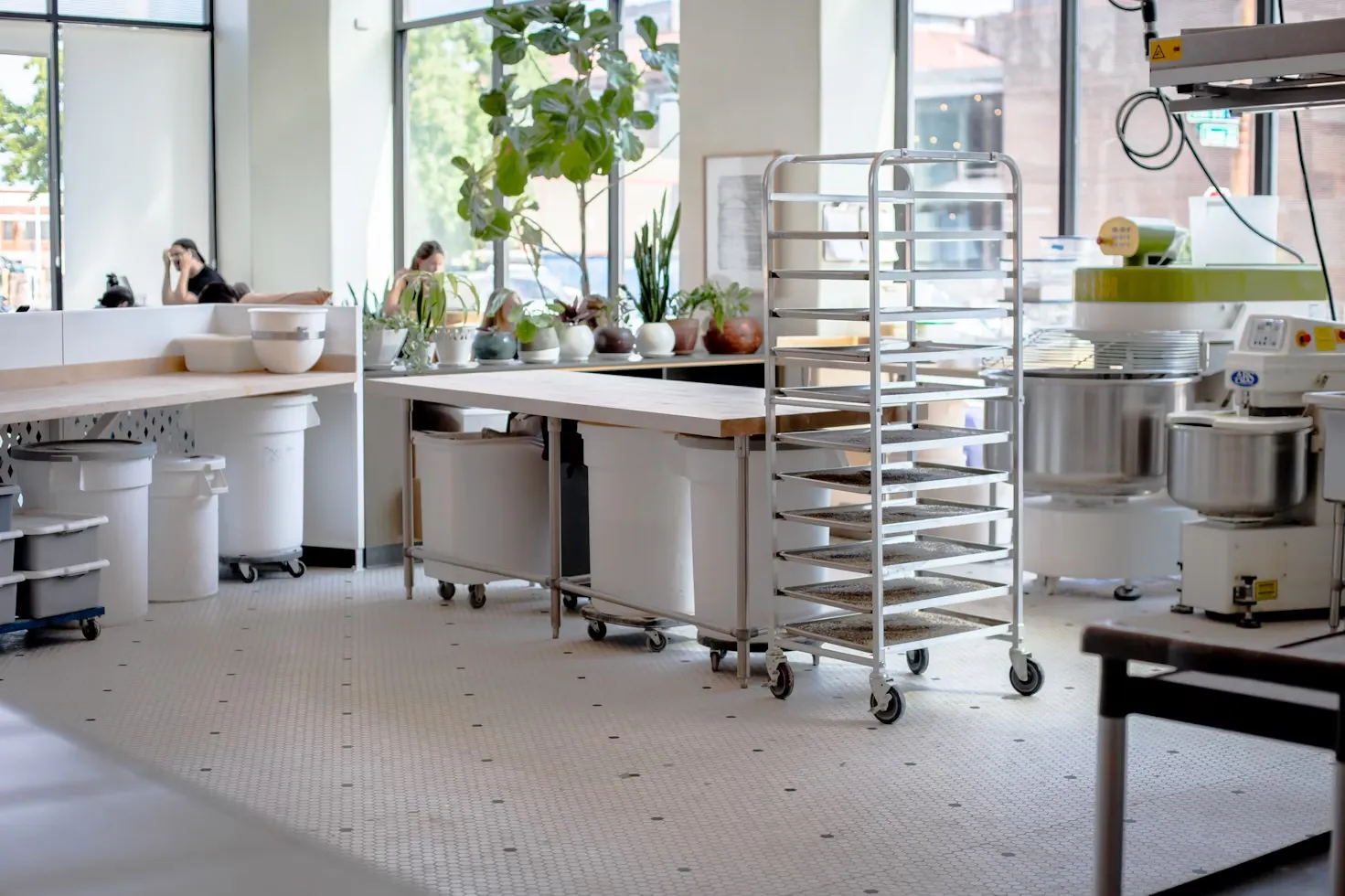
Editorial Disclaimer
This content is published for general information and editorial purposes only. It does not constitute financial, investment, or legal advice, nor should it be relied upon as such. Any mention of companies, platforms, or services does not imply endorsement or recommendation. We are not affiliated with, nor do we accept responsibility for, any third-party entities referenced. Financial markets and company circumstances can change rapidly. Readers should perform their own independent research and seek professional advice before making any financial or investment decisions.
Want to reduce your restaurant operating costs and streamline efficiency?
Imagine this. Perfectly smooth restaurant operations. Consistently high-quality food output. Profit margins that are higher than you can dream.
Doesn't that sound like a restaurant owner's dream?
Now let's bring it back to reality…

Labor costs are up 18.3% over 2019 pre-pandemic levels, food costs have increased 21.8%, and staffing the kitchen with dependable employees feels like an impossible task these days.
But there is hope for you…
Automated commercial kitchen equipment is on its way to rescue you.
Before we get into the nitty gritty on the best automated commercial kitchen solutions to invest in, let's look at a statistic that you might find surprising:
The global commercial kitchen appliances market hit $101.7 billion in 2024 and is projected to grow at a CAGR of 6.1% to reach $146.2 billion by 2030.
Why is it that the most tech-savvy and innovative restaurant operators are scrambling to automate their kitchens?
Think about what you've been hearing and reading about. Your biggest operational challenges are probably:
Automated commercial kitchen equipment helps solve all of the above. Problem. solved.
And one more thing…
Most commercial kitchen operators think of automation and picture a completely robotic kitchen. That's not the case at all.
Smart kitchen automation only automates the really laborious, time consuming tasks that take up too much of your valuable kitchen staff's time.
The proof? According to a study, 37% of operators are already using "labor reducing technology" like automatic commercial kitchen equipment to bring down labor costs. They're not waiting around, so why are you?
Okay let's get one thing straight right now.
Finding and retaining competent kitchen staff is just about impossible right now. The average restaurant employee stays only 56 days before leaving.
And the cost of that constant turnover to your business is just astronomical:
But it's even worse than that. On top of the direct costs of constantly rehiring and training, employee turnover costs up to 200% of that employee's salary when you factor in costs like advertising, lost productivity, and more.
That's where automation comes in.
By taking over the hardest, most repetitive jobs in the kitchen, automated equipment improves employee satisfaction and retention. Your reduced staff has more time for creative tasks and less time on menial prep work.
Now you're probably curious about exactly what kind of commercial kitchen equipment we're talking about, right?
Here are some of the most game-changing commercial kitchen automation equipment types we've seen.
Picture this. No more standing over fryers and worrying about oil spatter burns or oil changes.
High-tech automated frying systems like those offered by companies specialising in building maintenance can control portions, cooking time, and temperature, and automate the oil filtration process completely.
These fryers think, not just cook. Adjusting for food type, oil temps, and even calculating when the oil needs changing.
Commercial ovens today are basically computers on legs. Cook ovens like these store and automatically adjust temperature and humidity settings for hundreds of different cooking programs.
Internal sensors monitor food doneness and alert you when it's ready, too.
One multi-cook oven can handle baking, roasting, steaming, and sous vide cooking all in the same unit.
These ovens auto-calibrate for different cooking types and ensure foolproof precision with no more overcooked food or wasted ingredients.
This might be the coolest kitchen automation innovation of all…
Robotic food prep systems can chop veggies, slice proteins, portion ingredients, and more with complete precision.
They work 10 times faster than humans and eliminate the guesswork. Your prep cooks spend less time in the weeds doing prep and more time on higher-value work like quality control and creative tasks.
Now let's talk about how much money all that kitchen automation can actually save you.
Automation can help reduce labor costs in the front-of-house by 20-50% (restaurants using serving robots have reported savings in this range). Kitchen automation systems offer similar back of house savings.
Automation and robotic kitchen systems can increase kitchen throughput by 25-40% during peak service times.
Precise portion control, ingredient use, and temperature means food waste reduction of up to 15%.
For a restaurant spending $10,000 a month on food costs, that's $1,500 per month going back in your pocket.
The reason the commercial cooking equipment market is growing by 7.1% CAGR is because smart operators know about these game-changing commercial kitchen equipment automation technologies:
IoT connectivity. Kitchen equipment that actually sends you alerts about when maintenance is required, analyzes usage and energy use patterns, and keeps you informed about food safety temps.
Predictive maintenance. Instead of your maintenance team scrambling to fix equipment when it unexpectedly breaks down, smart predictive maintenance tells you when maintenance is needed before a crisis situation arises.
Automated inventory tracking. Automated inventory systems track ingredient use in real-time, automatically reorder supplies based on preset parameters, and prevent stock-outs.
Investing in automated commercial kitchen equipment is a smart strategic move. But the upfront costs of new tech can be scary. Smart operators think of return on investment (ROI) not just price tag when they purchase new equipment.
Most smart automation investments pay for themselves in 12-24 months in labor costs, food waste, energy savings, and increased sales.
Start small, automate smart.
You don't have to buy every piece of equipment you can for it to be fully automated. Start with one key area where you want to make a big impact. Is it the kitchen? Front-of-house labor shortage? Prep work? Upgrade your most labor intensive, highest turnover operations first.
While the restaurants around you are still struggling with the same issues they've always had, you can make huge operational improvements with the right commercial kitchen automation.
Automated cooking equipment gives you the competitive advantages of consistency (same dish every time), speed (faster service), higher quality (precise cooking temp and timing), improved safety (fewer injuries), and the ability to scale (increase capacity without adding staff in proportion).
If you're ready to start automating your restaurant operations, you're in the right place.
Start by taking inventory of your current operations and understanding your biggest pain points. Research automated equipment options to solve your key issues and calculate your expected ROI. Plan your implementation phase by introducing automation to one key area first, training staff, and evaluating results.
Investing in automated commercial kitchen equipment is not a luxury or a trend, it's a must if you want to survive in the increasingly competitive restaurant world.
Rising labor costs, a more challenging staffing environment, and higher customer expectations mean kitchen automation is more of a competitive necessity than an option.
The math is simple:
If you want to dominate your market, now is the time to automate. The restaurants that take the plunge and automate their operations today will crush the ones that wait.
What's your next step? Do your research on automated equipment for your biggest operational problem. Whether it's prep work, cooking consistency, staffing challenges, or something else, there is a specific type of automated equipment that can solve your challenge.
The future of the commercial kitchen is automated. The question is, will you be a first mover with the competitive advantage, or a late adopter playing catch up?
Automated equipment helps solve many common restaurant challenges. It improves food consistency, reduces labour costs, helps manage staffing shortages, cuts down on food waste, and speeds up customer service, especially during busy periods.
Not at all. The goal of smart kitchen automation is not to create a fully robotic kitchen but to handle the most repetitive and time-consuming tasks. This frees up your staff to focus on more creative and high-value work, which can improve job satisfaction and retention.
There's a wide range of equipment available. Some popular examples include automated frying systems that manage cooking times and oil filtration, smart ovens that can store hundreds of recipes, and robotic food prep systems for tasks like chopping and portioning ingredients with precision.
While there is an upfront cost, it's best to think about the return on investment (ROI). Automated equipment can reduce labour costs by 20-50% and food waste by up to 15%. Most investments pay for themselves within 12 to 24 months through these savings and increased efficiency.
A strategic approach is best. You don't need to automate everything at once. Start by identifying your biggest operational challenge, whether it's food prep, cooking consistency, or staffing. Then, invest in a piece of equipment that solves that specific problem, train your staff, and measure the results before expanding.
Want to reduce your restaurant operating costs and streamline efficiency?
Imagine this. Perfectly smooth restaurant operations. Consistently high-quality food output. Profit margins that are higher than you can dream.
Doesn't that sound like a restaurant owner's dream?
Now let's bring it back to reality…